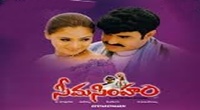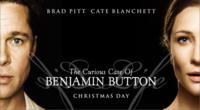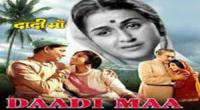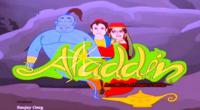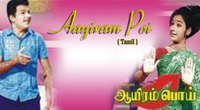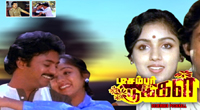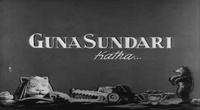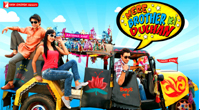The Big Trail is a 1930 American pre-Code early widescreen movie shot on location across the American West starring John Wayne in his first leading role and directed by Raoul Walsh.
| The Big Trail | |
|---|---|
Movie poster for The Big Trail | |
| Directed by | Raoul Walsh |
| Produced by | Winfield R. Sheehan |
| Written by |
|
| Starring |
|
| Music by |
|
| Cinematography |
|
| Edited by | Jack Dennis |
| Distributed by | Fox Film Corporation |
Release date |
|
Running time | 122 min. 70mm version, 108 min. 35mm version |
| Country | United States |
| Language | English |
| Budget | $1,250,000 |
In 2006, the United States Library of Congress deemed this film "culturally, historically, or aesthetically significant", and selected it for preservation in the National Film Registry, saying "the plot of a trek along the Oregon Trail is aided immensely by the majestic sweep provided by the experimental Grandeur wide-screen process used in filming".
Screenplay
A large caravan of settlers attempt to cross the Oregon Trail. Breck Coleman (John Wayne) is a young trapper who just got back to Missouri from his travels near Santa Fe, seeking to avenge the death of an old trapper friend who was killed the winter before along the Santa Fe Trail for his furs, by Red Flack (Tyrone Power, Sr.) and his minion Lopez (Charles Stevens). At a large trading post owned by a man named Wellmore, Coleman sees Flack and suspects him right away as being one of the killers. Flack likewise suspects Coleman as being somebody who knows too much about the killing. Coleman is asked by a large group of settlers to scout their caravan west, and declines, until he learns that Flack and Lopez were just hired by Wellmore to boss a bull train along the as-yet-unblazed Oregon Trail to a trading post in northern Oregon Territory (which at the time extended into current British Columbia), owned by another Missouri fur trader. Coleman agrees to scout for the train, so he can keep an eye on the villains and kill them as soon as they reach their destination. The caravan of settlers in their Prairie schooners would follow Wellmore's ox-drawn train of Conestoga Wagons, as the first major group of settlers to move west on the Oregon Trail. The film is set somewhere between 1837 and 1845. This is historically accurate, as the first major wave of settlers on the Oregon Trail was in 1843, although the details were completely different.
Coleman finds love with young Ruth Cameron (Marguerite Churchill), whom he'd kissed accidentally, mistaking her for somebody else. Unwilling to accept her attraction toward him, Ruth gets rather close to a gambler acquaintance of Flack's, Thorpe (Ian Keith), who joined the trail after being caught gambling. Coleman and Flack have to lead the settlers west, while Flack does everything he can to have Coleman killed before he finds any proof of what he'd done. The three villains' main reason for going west is to avoid the hangman's noose for previous crimes, and all three receive frontier justice instead. The settlers trail ends in an un-named valley, where Coleman and Ruth finally settle down together amidst giant redwoods.
- John Wayne as Breck Coleman
- Marguerite Churchill as Ruth Cameron
- El Brendel as Gus, a comical Swede
- Tully Marshall as Zeke, Coleman's sidekick
- Tyrone Power, Sr. as Red Flack, wagon boss
- Frederick Burton as Pa Bascom
- Russ Powell as Windy Bill (uncredited)
- Ian Keith as Bill Thorpe, Louisiana gambler
- Charles Stevens as Lopez, Flack's henchman (Geronimo's real-life grandson)
- Louise Carver as Gus's mother-in-law
- John Big Tree as Indian Chief (uncredited)
- DeWitt Jennings as Boat Captain Hollister (uncredited)
- Ward Bond as Sid Bascom (uncredited)
- William V. Mong as Wellmore (uncredited)
- Marcia Harris as Mrs. Riggs (uncredited)
- Iron Eyes Cody as Indian (uncredited)
- Alphonse Ethier as Marshal (uncredited)
- Victor Adamson as Wagon Train Man (uncredited)
- Helen Parrish as Honey Girl Cameron (uncredited)
- Marilyn Harris as Pioneer Girl (uncredited)
- Jack Curtis as Pioneer (uncredited)
- Jack Padjan as Pioneer (uncredited)
- Robert Parrish as Pioneer Boy (uncredited)
This section does not cite any sources. (October 2013) (Learn how and when to remove this template message) |
Reputedly (the claim is unconfirmed) the initial script, then called "The Oregon Trail", was first offered to director John Ford who then passed it on to his friend Raoul Walsh.
For the film, Walsh had employed 93 actors and used as many as 725 natives from five different Indian tribes. He also obtained 185 wagons, 1,800 cows, 1,400 horses, 500 buffalos and 700 chickens, pigs and dogs for the production of the film.
Walsh offered the lead to actor Gary Cooper, who couldn't accept it. According to John Ford's later account, Walsh supposedly then asked Ford for casting suggestions, whereupon Ford recommended a then-unknown named John Wayne because he "liked the looks of this new kid with a funny walk, like he owned the world". When Wayne professed inexperience, Walsh told him to just "sit good on a horse and point". Walsh said that he initially saw Wayne, then a prop man, moving heavy furniture as though it were light as a feather, then decided to test him for the part. Almost a decade later, Ford began saying that he himself had discovered Wayne as a prop man when casting Stagecoach (1939), even though Wayne had played the lead in dozens of movies by then throughout the 1930s. Ford stuck to this obviously false story in interviews for the rest of his life. Filming on The Big Trail began on-location just outside Santa Fe, New Mexico in April 1930, which was unheard of at the time and quickly became very costly to the studio.
The shoot lasted from April 20 to August 20, 1930 and was filmed in seven states. The film was shot in an early widescreen process called 70 mm Grandeur film, which was first used in the film Fox Movietone Follies of 1929. Grandeur was used by the Fox Film Corporation for a handful of films released in 1929 and 1930, of which The Big Trail was the last. Grandeur proved financially unviable for an industry still investing in the switch to talking pictures.
The scene of the wagon train drive across the country was pioneering in its use of camera work and the depth and view of the epic landscape. An effort was made to lend authenticity to the movie, with the wagons drawn by oxen instead of horses - they were lowered by ropes down canyons when necessary for certain shots in narrow valleys. Tyrone Power, Sr.'s character's clothing looks realistically grimy, and even the food supplies the 'immigrants' carried with them in their wagons were thoroughly researched. Locations in five states, starting from New Mexico to California, were used to film the caravan's 2,000-mile (3,200 km) trek.
After shooting, the film was previewed to select audiences and generally released on October 1930. "Often the scenes" in the film, wrote Mordaunt Hall in The New York Times "cause one to marvel at their naturalness and beauty. It has a thunderstorm that looks as real as the land, water and sky that confront one throughout this production". According to Hall, in one sequence, featuring a native American attack, "suddenly it seems as though one were tugged from one's seat and thrown in front of the charging horses, which appear to plunge from the screen and disappear into the velvety darkness of the theatre".
However, the movie became a box office bomb because it was released as a widescreen film during a time when theatres were unwilling to change their standard screens owing to cost.
After completion of the film, Wayne was only cast in low-budget serials and features (mostly Poverty Row westerns); it took Wayne's role in Stagecoach (1939) for him to become an established performer. It would be over 20 years before the concept of widescreen films was revived.
This section does not cite any sources. (October 2013) (Learn how and when to remove this template message) |
Beyond the format difference, the 70mm and 35mm versions vary substantially from each other. They were shot by different cameras, and footage for each format was edited separately in the cutting room. Some scenes were shot simultaneously by both cameras, the only difference being the angle (with the better angle usually given to the 70mm camera). Some scenes were shot first by one camera, and then retaken with the other camera. The 70mm cameras could not focus well up close, so their shots were mainly panoramas with very few close-ups. The 35mm cameras could move in and focus at short distances. Thus, scenes in the 70mm version might show two characters talking to each other in the same take, making greater use of the widescreen frame, while the 35mm version would have close-up shots cutting back and forth between the two characters. This may have been an artistic choice as much as a technical one. The cinematographer responsible for the 70mm version of the picture, Arthur Edeson, wrote in the September 1930 issue of American Cinematographer: "Grandeur reduces the number of close-ups considerably, as the figures are so much larger that semi-close-ups are usually all that is needed".
In editing the films, some scenes were edited out for one version but allowed to remain in the other. The 35mm version was edited to be shorter, so many scenes in the 70mm version are not found in the 35mm. However, there are a few scenes in the 35mm version not found in the 70mm. The 35mm version was 108 minutes, but the 70mm was longer at 122 minutes.
As 2018, Rotten Tomatoes gives the film an overall rating of 100%.
A neglected film for many years, it was only seen in the conventional 35mm version for decades. In the early 1980s, the Museum of Modern Art in New York City, which held the original 65mm nitrate camera negative, wished to preserve the film but found that nitrate decomposition had left it too shrunken and fragile to be copied to safety film, and that no film lab would touch it. Over a year-long project, Karl Malkames, a specialist in film restoration technology, designed and built a special printer to preserve this version of the film. The image on the original negative was transferred to 35mm anamorphic master. The printer copied at a speed of one frame a second, leading to the film's year-long process in preserving its original form.
Dave Kehr wrote for the Chicago Tribune in 1988: "The added richness of resolution and the silvery sheen that the first generation 70 mm. nitrate prints would have provided can only be imagined. And yet, The Big Trail remains an eye-popping experience".
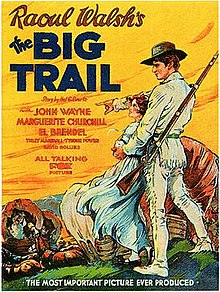 Story of movie The Big Trail :
Story of movie The Big Trail : 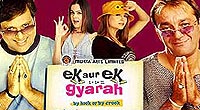
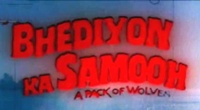
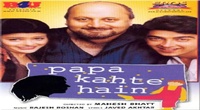
.jpg)
.jpg)
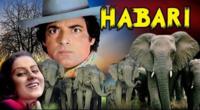
.jpg)
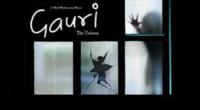
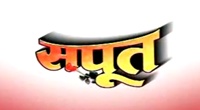
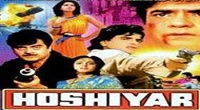
.jpg)
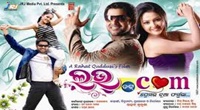
.jpg)
